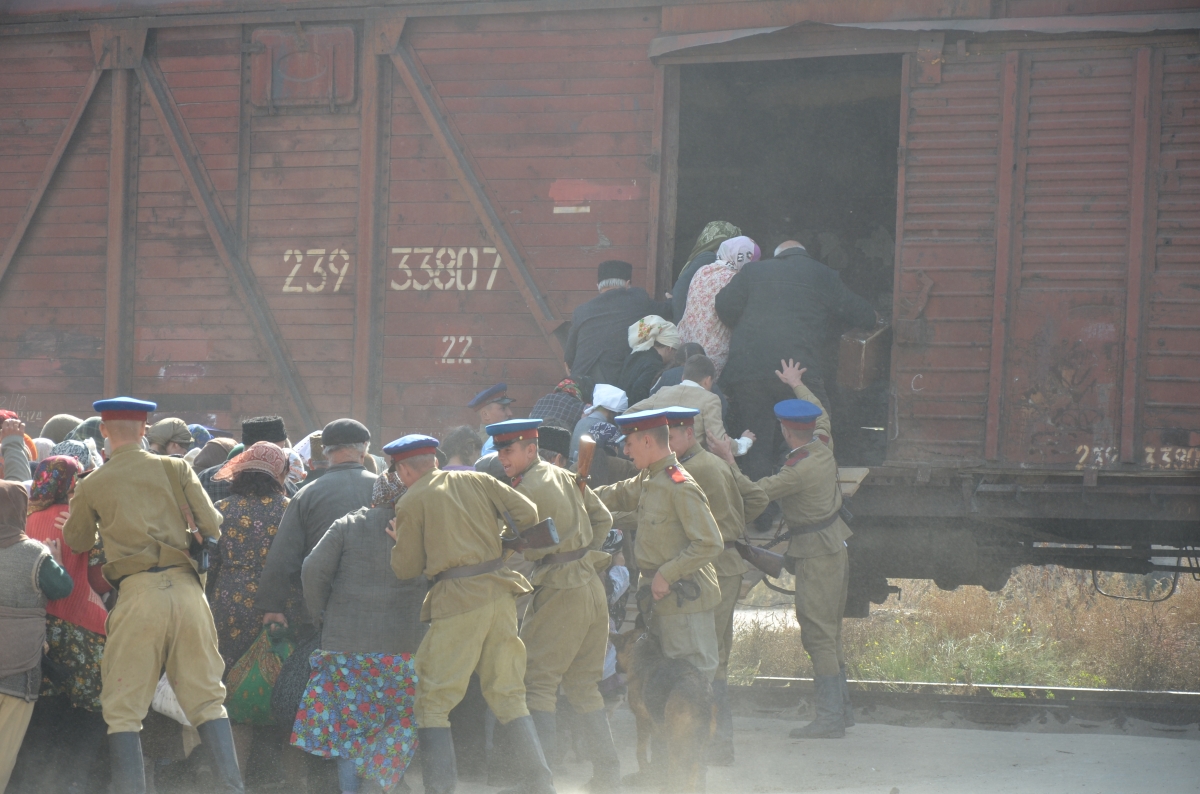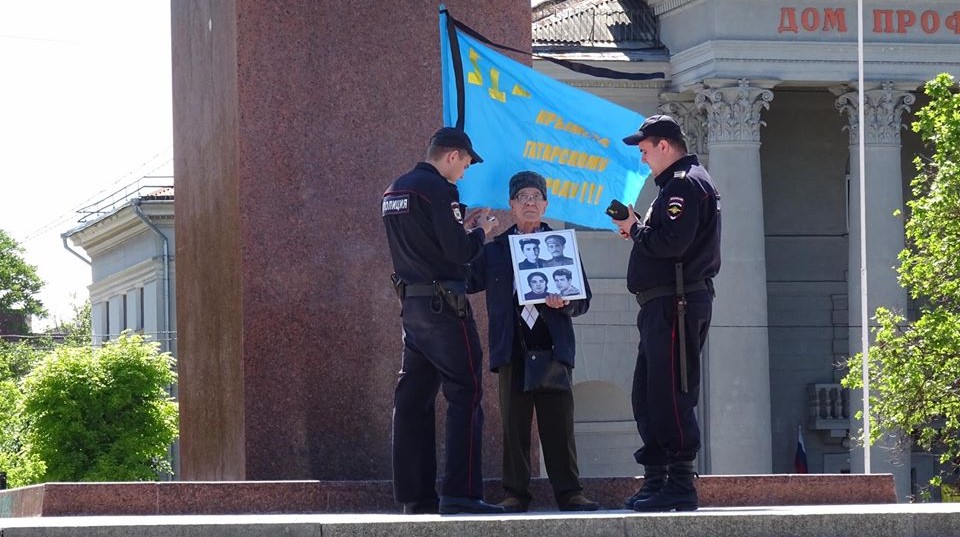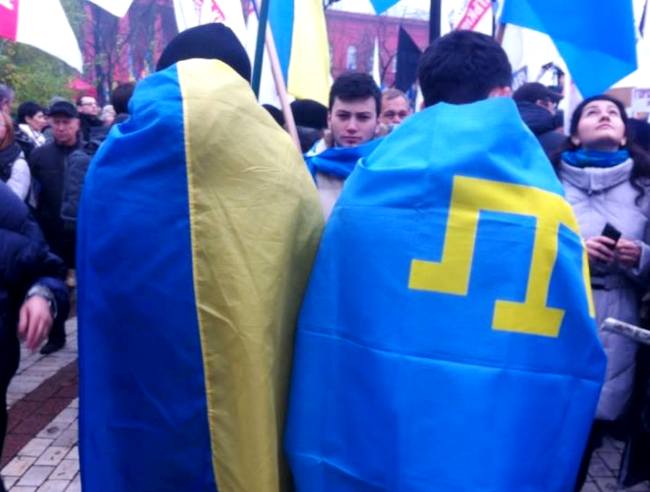Earlier this year at the Museum of Theater, Musical, and Film Art in Kyiv, its director Akhtem Seitablaiev revealed the details of how his movie, which scared Russian neo-Stalinists and taught Ukrainian children tolerance, had come to life.
The film title refers to the family story of the author. In the late 1950s, Crimean Tatar artists deported to Central Asia organized a folk song and dance ensemble. The uncle of Akhtem Seitablaiev suggested to call it “Haytarma,” which meant “Return.”
Crimean Tatars were dreaming of returning home for almost half a century. When in the early 90s, after the fall of the communist dictatorship, they finally received that opportunity, Crimean Tatar intellectuals put forward the objective of creating a national cinema. Most agreed that the first movie had to focus on the greatest tragedy in the Crimean Tatar history: the Stalinist deportation.
Read also: Deportation, genocide, and Russia’s war against Crimean Tatars
Such a film appeared only in 2013, more than two decades after Ukraine declared its independence and less than a year before the Russian invasion and occupation of Crimea. It was based on the life story of the famous military pilot of Crimean Tatar and Dagestani origin Amet-Khan Sultan, twice Hero of the Soviet Union, known as the “King of Ram Attack.” After the expulsion of the Nazis from Crimea in May 1944, he comes to visit his relatives—at the time when Moscow leaders doomed them, along with all their nation, to the eviction thousands of miles away for alleged “treason.”In any time, there are people for whom honor, dignity, and brotherhood stand much higher than the fear of death.
Red Air Force General Timofey Khryukin, risking his own life, saves the parents of the hero pilot from deportation in cattle wagons. “Against all odds,”
Seitablaiev comments on his act in 2017, “in any time, in all liminal situations, at war, there are people for whom honor, dignity, and brotherhood stand much higher than the fear of death. Today, both fortunately and unfortunately, we are experiencing the same times.”
Watch online: Haytarma: the film about Stalin’s deportation of the Crimean Tatars Russia doesn’t want you to see
[youtube https://www.youtube.com/watch?v=f181jS4_egs]
At least 200,000 Crimean Tatars were deported to Central Asia and remote Russian regions. Tens of thousands of them died either on the way or in the first years upon the arrival in the new locations. Later in 1944, having deported the Crimean Tatars, the Soviet dictator ordered to expel other “enemy peoples”—Armenians, Greeks, and Bulgarians—from the Crimean peninsula.
“Life itself wrote the plot [of the film],” says the director. “Haytarma is 90% based on the documentary evidence.” The film crew carefully studied the historical sources, including Moscow KGB archives, which were difficult to access, and listened to the survivors of the deportation.
Seitablaiev calls his crew “an exemplary model of human living together.” Only four of its members, including the director himself, were Crimean Tatars, while others were of Ukrainian, Jewish, Greek, and Armenian origins. He was especially moved when his lighting engineers started to learn and use Crimean Tatar vocabulary out of respect for the participants of mass scenes.
Many aged Crimean Tatars who had been deported in their childhood took part in the mass scenes, now performing the roles of their grandparents. These people came from all over Crimea often holding the items reminiscent of those days. One person brought a shawl, and another a sewing machine, which once had helped the family to earn some money and survive after the deportation. Their presence at the movie set imposed a great responsibility on the whole crew, who were doing their best so that the hopes of the elderly actors were not disappointed.

During the filming of a mass scene when Soviet NKVD troops drove the Crimean Tatars into wagons, Seitablaiev noticed a very old woman with a Quran in her hands. She climbed into a carriage, then entered the second one, and the third one... This was not convenient for the forthcoming montage because the same person could not appear in several wagons. “Son, I’ll get on so many times as necessary,” she told the director. Seitablaiev did not understand what her words meant until her son, also aged, gave the explanation.They again experience their pain... and get bitter medicine.
“Do you know what is going on?” he asked. “Why are all these old people here? Because for them, it is a medicine. They again experience their childhood memories and their pain but do this in pretense. This is the pain of lifelong stigma of ‘traitors,’ whom they weren’t. The stigma of a Crimean Tatar—and thus allegedly ‘not like everyone else’ and ‘inferior.’ Having lived their whole lives with that, they are finally getting bitter medicine.”
Paradoxically, when playing the moment of humiliation, the survivors liberated themselves from the burden of the trauma.
Haytarma was premiered in Simferopol four years ago, on 17 May 2013. On that day, Russian Consul General in Crimea Vladimir Andreev personally pressured the nine aged Heroes of the Soviet Union, military comrades and students of Amet-Khan Sultan, who arrived from Russia for the occasion. Andreev demanded them not to attend the premiere. He claimed that the film “distorted the history of the Soviet Union,” although publicly admitting that he had not even watched it before. As a result, only two of the nine Heroes were present at the event.
Andreev also infamously stated that a “proper” movie about the Crimean Tatars during World War II should mainly concentrate on their supposed “treason.” The scandal caused by these words cost him his consular office. The former consul left Ukraine but refused to apologize. “Remember,” he warned, “it’s not just my opinion: this is the opinion of Russia.” And, as the following years have demonstrated, it was not an exaggeration. On 18 May 2017, for the fourth time since the Russian invasion of Crimea, the Crimean Tatars are banned from the public commemoration of the victims of the deportation in their native land.

Read also:
- Remember the Crimean Tatars jailed for resisting Russian occupation
- Imaginary “terrorists” with no terror acts: Russia’s collective punishment of Crimean Muslims
Critical remarks were voiced from the other side as well. Some of the survivors noted that May 1944 had been much crueler than the film showed. Seitablaiev acknowledges he deliberately softened certain points wishing that not only adults but also adolescents could watch it. Haytarma, in his idea, should contribute to the rise of a new generation that would reject xenophobia and aggressive violence. Hence the biggest reward for him was the film’s appreciation on the part of the organizers and participants of the Ukrainian Youth Tolerance Camps.
“I am sure,” he adds, “that culture—be it cinema or theater or visual arts or sculpture or museums—is a tool that can help us stitch our country together without blood.”
The historical narratives learned by the previous generations of Ukrainians and Crimean Tatars, he says, were built on their mutual alienation. Political regimes constructed them using the ancient principle: “divide and conquer.” These regimes benefited from people’s fear of “others”—those who have a different skin color, speak another language, pray or make coffee in a different way.
In fact, Seitablaiev believes, Ukrainians, Crimean Tatars, and other members of the Ukrainian political nation have much more in common than usually assumed. He reminds that the word “Maidan,” which became the calling card of Ukraine in the world’s eyes in 2004 and again in 2013—14, probably came to Ukrainian from the Crimean Tatar language.

“I don’t tend to believe that a film or a book can change a person’s outlook, especially in our time of modern technology and information flows,” says the director. “But I do have a hope that if one watches such a film as Haytarma aged 13 or 14 and then grows up and becomes, say, a law enforcer, he won’t beat the heads of 14- or 16-year-old girl or boy with a club because they come to Maidan, sing the anthem of their country, and want to express their opinion.”
On 18 May 2017, the anniversary of the deportation, the new movie Alien Prayer by Akhtem Seitablaiev has been presented on the Ukrainian screen. It is devoted to the Crimean Tatar woman Saide Arifova who saved dozens of Jewish children twice during WWII: first from the Nazis and then from the NKVD. His third war film—on the Ukrainian soldiers who defended Donetsk Airport from the present-day invaders—is going to come out later this year.
Watch the story: Chronicles of heroic Ukrainian Donetsk Airport “Cyborgs” soon on the big screen

